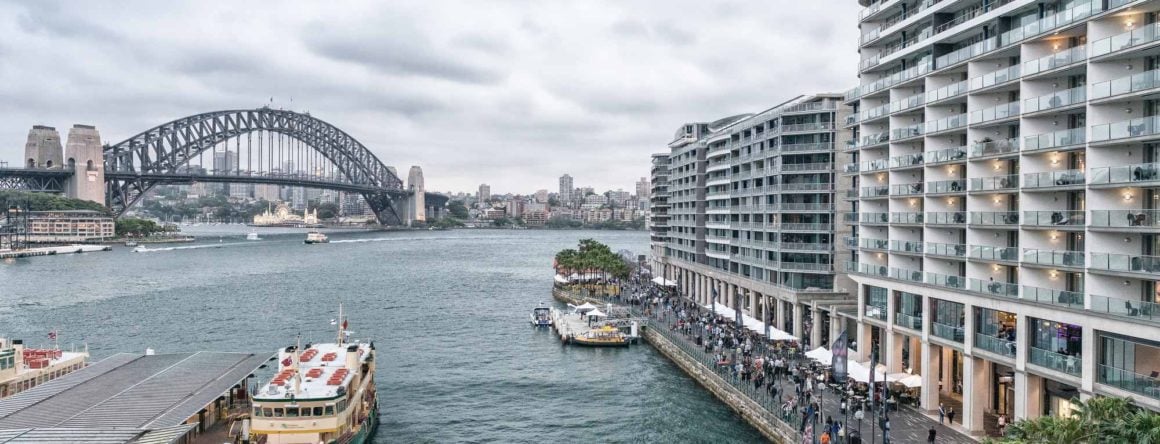Most people are familiar with the idea of the Census as a population count, but a lot of additional data on dwellings and households are also collected.

This enables users to see the spatial patterns and characteristics across our cities and regions.
This blog looks at vacant dwellings in NSW, with particular reference to spatial patterns and possible future trends.
How many dwellings are vacant?
In 2016, 10.5% of dwellings in Australia were vacant on Census night.
The proportion has not changed significantly in the last 20 years - in 1996, 9.5% of dwellings were vacant.
There are many reasons why a dwelling might be vacant, but they are generally associated with holiday and/or second homes in coastal areas.Other reasons include dwellings between tenants, dwellings up for sale, or residents who are on holiday.
Unfortunately, the ABS has not collected data on the reasons why a dwelling was vacant since 1986.
While these reasons still largely ring true, more recent housing trends such as the rise of AirBnB and foreign ownership may have greater influence.
Qualitative studies have sought to uncover the reasons why dwellings are vacant, such as the work undertaken by Paris et al (2014) in coastal regions of South Australia.
Overall however there is a knowledge gap as to the reasons behind vacant dwellings.
Vacant dwellings in NSW
2016 Census data shows that there were almost 285,000 vacant dwellings in NSW, which equates to 9.3% of private dwellings.
The proportion differs significantly by location, as shown in the map below. This shows the proportion of vacant dwellings in each LGA.
LGAs with the largest proportion of vacant dwellings are located along the coast, traditionally the main location for holiday/second homes.
This is a long standing trend.

More remote areas in western NSW also had a higher proportion of vacant dwellings, but in these areas it's more the result of rural depopulation and farm amalgamations.
In Sydney, the proportion of vacant dwellings in most LGAs was lower than the NSW average.
Very few LGAs recorded a proportion greater than 10%.
Even in the inner city and eastern suburbs, which are popular with tourists and have a high number of AirBnB rentals, the proportion of vacant dwellings was relatively modest.
It's possible that this may have changed since 2016 due to a high number of apartment completions and other changes in the housing market.
As mentioned above, in the absence of qualitative data the reasons are largely speculative.
Vacant dwellings in Eurobodalla Shire

Located on the south coast, this is a holiday area with high amenity, and is also a popular retirement destination.
Even within the municipality there are significant differences in the proportion of vacant dwellings.
For example, almost half of dwellings in Malua Bay-Lilli Pilli-Rosedale-Guerilla Bay were vacant in 2016 compared to 13.5% in Urban Moruya-Moruya Heads.
The table below shows the change in the number of occupied and vacant dwellings, as well as the proportion of vacant dwellings, in Eurobodalla Shire over the period 1996-2016.
The data shows that both the number of occupied and vacant dwellings grew each Census, but the proportion of vacant dwellings showed some variability over the twenty years.
In 1996, the proportion of vacant dwellings was 32.4%, but this declined to 29.5% in 2001, before increasing again to 31.6% in 2006.
The proportion has declined in both Censuses since then.
The actual number of vacant dwellings continued to increase until 2011 when the figure reached 6,987, but in 2016 this declined slightly to 6,930.
It's difficult to determine if this is a new trend because coastal NSW has recorded more modest rates of population and dwelling growth in recent years.
Potential future trends
Over the years I've heard many people assume there will be an increase in population growth along the coast as baby boomers retire and occupy their holiday homes on a permanent basis.

But older baby boomers passed the typical age of retirement some years ago, and though there are still many retirees who make a permanent move to a coastal town, dwelling vacancy rates are persistently higher than the national average.
In other words, the scale of retirement migration is not sufficient to make an impact.
New homes continue to be built in coastal areas, without major changes in the way they are occupied.
At the same time, the role and function of coastal towns have not altered - they are holiday areas of high amenity that also happen to be popular retirement destinations.
This is unlikely to change in the future.
The increasing popularity of AirBnB rentals as an income stream is very likely to influence dwelling vacancy rates.

In Eurobodalla Shire, the number of occupied dwellings increased by 34% between 1996 and 2016, compared to 18% for vacant dwellings.
Only since 2011 has the number of vacant dwellings declined, and by any stretch the magnitude of this decline can only be described as minor.
The transition between work and retirement has also become increasingly blurred and can take place over many years.
In addition, the age at which people can access their superannuation or pension has also increased.
These factors combine to delay a potential retirement move and this influences rates of growth and dwelling change in coastal areas.
Summary
Coastal areas in NSW have higher than average dwelling vacancy rates, mainly on account of their role and function as holiday areas with high amenity.
Eurobodalla Shire on the south coast had the highest dwelling vacancy rate in 2016 (29.6%).
Many coastal areas are popular destinations for retirement migrants.
However, retirement migration in the 21st century is a different proposition to that of the 20th century when these moves first gained prominence.
New trends and influences on the housing market will continue to shape coastal communities and housing vacancy trends.
















